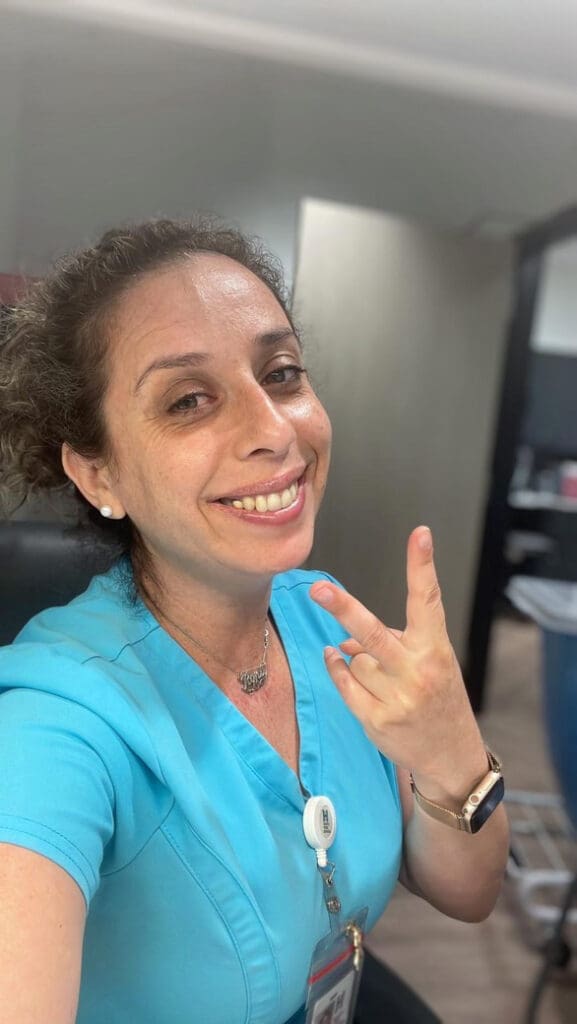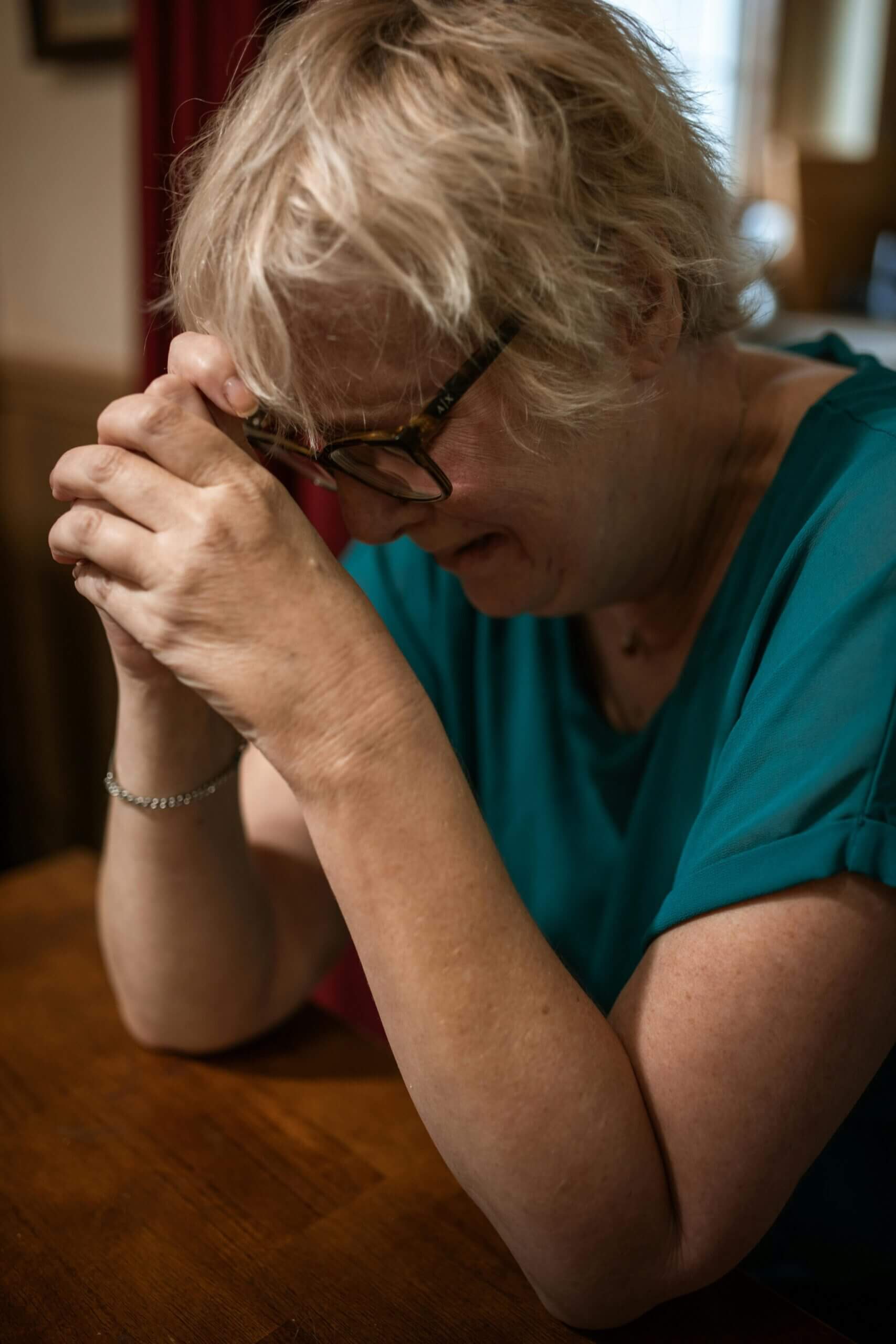Guest post by Ronit, Firdman, creator of “My Words of Healing” – Guided Journal for Women Undergoing Breast Cancer Treatments
Breast cancer doesn’t just impact the person diagnosed, it deeply affects their partner and the relationship as a whole. While the focus is often on treatments and survival, many couples quietly struggle with something less visible but just as critical: communication breakdown. This blog focuses on real, practical advice on how to emotionally communicate as a couple through breast cancer
A 2013 study published in the Journal of Psychosocial Oncology examined how breast cancer affects relationship dynamics and communication between partners. The researchers found that couples often fall into patterns of emotional withdrawal or protective buffering, where one partner hides their fears or stress to shield the other. While this may be well-intentioned, it often backfires, leading to emotional distance and increased distress on both sides.
What this research clarified is that open emotional communication is a key factor in how couples cope together. It challenged the old assumption that protecting your partner from worry is always helpful. Instead, it showed that sharing vulnerability, fears, sadness, and anger is more beneficial to the relationship’s health. Couples who avoided these emotional conversations tended to report lower relationship satisfaction and more psychological strain.
Gender roles influence how to emotionally communicate as a couple
The study also highlighted how gender roles and expectations can influence communication patterns. For instance, male partners often felt pressure to “stay strong” and “fix” things, which led them to suppress their own emotions and withdraw rather than connect.
Another study published in Psycho-Oncology in 2009 focused on how communication avoidance impacts emotional well-being in couples dealing with breast cancer. The researchers found that when either partner routinely avoided discussing cancer-related fears, side effects, or emotional concerns, it didn’t reduce stress – it amplified it.
Specifically, the study showed that avoidance leads to increased anxiety, depression, and emotional strain for both partners, not just the one with the diagnosis. It also revealed that avoidance often creates a feedback loop: one partner senses withdrawal from the other and responds in kind, deepening the emotional gap.
The takeaway from this study is that talking about cancer-related issues, even the scary or awkward ones, isn’t what causes distress. It’s the silence that does. Couples who engaged in more open and frequent dialogue reported feeling more emotionally connected and better equipped to manage the challenges of treatment and uncertainty.
Things that throw couples off
❖ Avoidance: One or both partners may avoid difficult conversations to “protect” each other.
❖ Role Shifts: The caregiving partner may take on more responsibilities, leading to imbalance and resentment.
❖ Body Image and Sexuality: Surgeries and treatments can affect how a person feels in their body, leading to less physical intimacy.
❖ Emotional Isolation: When emotions aren’t shared, the person with cancer may feel alone, and the partner may feel shut out.
So how can couples stay connected when breast cancer tries to pull them apart?
Schedule Weekly “Check-Ins”
Rather than leaving conversations to chance, couples can plan a short, non-medical talk each week focused on how each is doing emotionally. This space allows both to express needs without interruption.
Use prompts like:
“What’s something you need more of this week?”
“Is there anything I did that made you feel supported—or not supported?”
Use “We” Language
Saying “we’re going through this” instead of “you’re going through this” can strengthen the sense of togetherness. It signals shared commitment and emotional presence, reminding both partners that the illness affects them as a unit, not just the person diagnosed. This shift in language reduces feelings of isolation and helps both partners feel like teammates, not just caregiver and patient. Even small phrases like “we’ll figure this out together” or “we’re handling a lot” can go a long way in reinforcing connection. Research from Couple and Family Psychology: Research and Practice shows that couples who maintain a shared identity when facing illness report greater satisfaction and resilience.
Normalize Talking About Intimacy
Sexuality may change during and after treatments. Pretending it’s not an issue doesn’t help either partner. Safe, honest discussions can open doors to new forms of intimacy.
Start the conversation outside the bedroom. Keep it low-stakes and framed around connection, not performance. Here are some examples you can use:
“Can we talk about how we’re doing in terms of closeness?”
“I miss feeling physically close—can we find new ways that feel good for both of us?”
Framing it as shared exploration rather than a “problem to fix” helps lower defensiveness.
★ Name the Awkwardness Up Front
Sometimes the best way to get past discomfort is to acknowledge it.
Try saying:
“This feels awkward to talk about, but it matters to me.”
“I don’t have the right words, but I want to understand how you’re feeling about intimacy.”
That honesty often opens the door.
★ Use “Body Mapping” to Re-learn Comfort
Some couples benefit from body-mapping exercises: identifying parts of the body that feel good, neutral, or off-limits right now. This shifts the focus from intercourse to comfort and consent. For example:
“Is there anywhere you’d like me to avoid or focus on today?”
★ Reframe Intimacy Beyond Sex
Intimacy can include touch, conversation, closeness, shared activities, cuddling, or massage. Normalize redefining what sex and intimacy mean post-treatment.
Ask:
“What makes you feel close to me right now?”
“Is there a way we can be affectionate that feels good for both of us?”
Use Support Resources Together
Couples therapy or support groups specifically for couples dealing with cancer can help normalize the struggles and teach practical communication tools. Here are some resources that can be a starting point for exploring:
Couples Coping with Cancer Together (CCCT)
https://couplescopingwithcancer.com
Offers free, research-based video modules and worksheets to help couples improve communication, emotional connection, and stress management.
Will2Love – Cancer & Sexuality Resources
https://www.will2love.com
Offers free articles and guidance on intimacy, body image, and sexual health for cancer survivors and their partners.
Gottman Institute – Cancer & Relationships Toolkit
The Gottman Relationship Blog
While some resources are paid, there are free blogs and tip sheets on navigating illness in relationships using evidence-based techniques.
- Practice “Emotion Coaching” Conversations:
Emotion coaching is the skill of recognizing, validating, and responding supportively to your partner’s feelings — even when those feelings are hard to hear.
It’s not about fixing the problem or offering solutions. It’s about showing up emotionally in a way that says:
“I see you. I get it. I’m here with you.”
This type of interaction reduces emotional isolation, builds trust, and helps couples regulate each other’s stress responses.
Here are a few examples that can be used to show empathy.
Instead of: “You just need to stay strong.”
Try: “It’s okay to feel weak or scared sometimes. I’m here for all of it.”
Instead of:
“At least it’s not worse.”
Try: “What you’re going through is already a lot. You don’t have to minimize it.”
Instead of: “There’s no point in being upset—it won’t change anything.”
Try:“I get why you’re upset. Want to talk about what’s coming up for you?”
Instead of: “Let’s not dwell on the negative stuff.”
Try: “If something’s bothering you, I want to understand it. You don’t have to keep it in.”
Instead of: “I don’t know what to say.” (and shutting down)
Try: “I might not have the right words, but I’m here and I care. Tell me what you need.”
Emotional coaching isn’t just about responding with empathy, it also means making space for both partners to speak honestly.
For the woman going through breast cancer, that includes naming her needs, even when it feels vulnerable or uncomfortable.
It’s common to stay quiet out of guilt or fear of being a burden. But silence can create more distance. Instead, using simple, clear language like “I feel… I need…” can make a big difference. For example: “I feel overwhelmed and I need you to just sit with me tonight,” or “I feel disconnected lately, I need us to talk, not about cancer, just about us.” Being specific, whether it’s needing help with chores, reassurance about body changes, or more emotional check-ins, helps your partner show up in the right ways.
You just have to try practicing giving your voice. Naming what you need is part of staying connected, and it’s one of the most loving things you can do for yourself and your relationship. If you need a safe space to practice without judgment, try talking to AskEllyn and use her as a coach.
Breast cancer doesn’t just test the body, it tests the bond between partners. But disconnection isn’t inevitable. The research is clear: couples who talk, even clumsily, even when it’s hard, fare better emotionally and relationally. Open communication, especially about fears, intimacy, and emotional needs, is not a luxury during illness — it’s a form of care.
There’s no perfect script. What matters most is showing up with honesty, curiosity, and compassion. Whether it’s through a quiet check-in, a brave question about intimacy, or just saying, “I’m here, and I want to understand” — those small moments of connection add up, and matter.
You don’t have to do cancer right. You just have to do it together.
If you’re ready to begin your journaling journey, consider using “My Words of Healing”, a guided journal specifically designed for women undergoing breast cancer treatments. This thoughtfully crafted journal offers prompts for reflection and space to help you process your emotions and rediscover hope.
Click here to purchase your copy today.- https://a.co/d/6aFo871
About the author

Ronit Firdman is a dedicated mammography technologist with over 14 years of experience supporting women through breast cancer screening and diagnosis. Witnessing the emotional and physical challenges her patients face, she was inspired to create My Words of Healing: A Guided Journal for Women Undergoing Breast Cancer Treatments. This journal empowers women to process their journey through writing, fostering strength, hope, and healing. Driven by compassion and a commitment to making a difference, Ronit continues to advocate for resources that uplift and support women navigating breast cancer.
Other AskEllyn blogs by Ronit Firdman
The “real” Ellyn’s video take on this topic!




